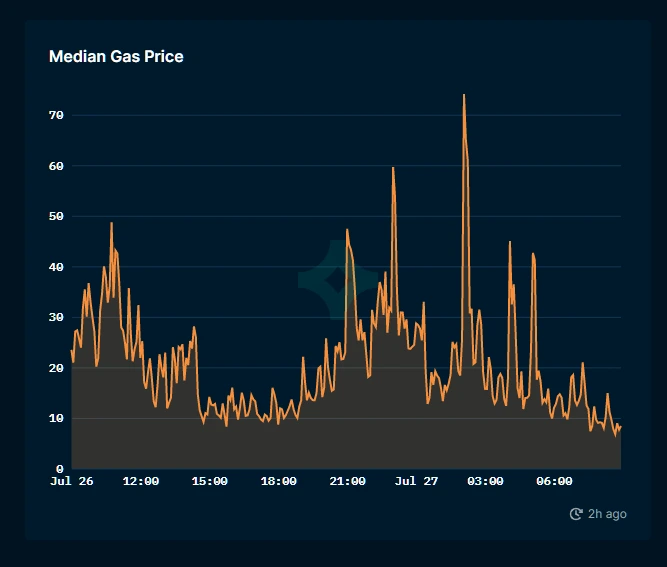Introduction
Blockchain innovation has upset different businesses by offering a decentralized and straightforward framework for recording and checking exchanges. One integral component of this technology is gas, plays a crucial role in blockchain transactions. this article, we delve into the significance of gas in blockchain transactions and its role in optimizing efficiency and managing costs.

Understanding the Concept of Gas in Blockchain
Gas alludes to the computational exertion expected to execute tasks or savvy contracts on a blockchain network. It acts as a unit of measurement for the amount of work performed by miners or validators. Gas ensures that each transaction or operation is given a fair share of resources and prevents malicious actors from exploiting the system.
Importance of Gas in Blockchain Transactions
Gas is essential for executing transactions reliably and securely on a blockchain network. It serves as an incentive for miners to include transactions in the blockchain and motivates them to prioritize transactions with higher gas fees. Moreover, gas helps maintain stability and prevents potential network congestion.
Gas Fees in Blockchain: An Overview
Gas expenses are the charges paid by clients to execute exchanges on a blockchain network. These fees are typically paid in cryptocurrency and serve as compensation for the computational resources utilized during transaction execution. Users can adjust the gas fees to control the priority of their transactions and reduce waiting times.

Gas Limit in Blockchain and Its Significance
Gas limit refers to the maximum amount of gas that can be spent in a block. It acts as a safety mechanism to avoid infinite loops and denial-of-service attacks. Miners select transactions with gas fees below the gas limit, ensuring that the block remains within the computational capacity of the network.
Gas Price in Blockchain: Factors and Implications
Gas price determines the cost of executing a transaction on the blockchain network. Several factors affect gas prices, including network demand, congestion, and block size. Higher gas prices result in faster transaction confirmations, whereas lower prices may lead to longer waiting times.
Transaction Gas in Blockchain: How It Works
In a blockchain transaction, the gas required for execution depends on the complexity of the operation or smart contract. Different operations consume varying amounts of gas, and more complex tasks necessitate higher gas requirements. Miners validate these transactions by executing the requested operations and receive gas fees as compensation.
Gas Usage in Blockchain: Optimization and Management
To optimize gas usage, it is crucial to write efficient and well-optimized smart contracts. Reducing unnecessary computational operations and using efficient algorithms can significantly minimize gas consumption. Additionally, proper management of gas limits and fees ensures cost-effective and reliable transactions.
Gas Cost in Blockchain: Calculation and Considerations
Working out the gas cost of an exchange includes increasing the gas cost by the gas utilized. It is essential to consider the gas cost before executing a transaction, especially when deploying complex smart contracts. Careful consideration of gas costs helps users plan their expenses and ensure the feasibility of their transactions.
Gas Benefits in Blockchain: Enhancing Efficiency
Gas plays a pivotal role in enhancing the efficiency of blockchain networks. By allocating resources fairly and prioritizing transactions with higher fees, gas incentivizes miners to process transactions promptly. This mechanism prevents network congestion and ensures the smooth functioning of the blockchain ecosystem.
Gas Mechanism in Blockchain: Key Components
The gas mechanism in blockchain comprises several key components. Gas limit determines the maximum amount of gas that can be spent, while gas price dictates the cost of executing a transaction. Miners validate transactions and receive gas fees as compensation, ensuring the security and integrity of the network.
Gas Tokens in Blockchain: Exploring the Token Economy
Gas tokens have arisen as an entrancing idea in blockchain innovation. These tokens allow users to store gas for future use, enabling them to optimize transaction costs during periods of high gas prices. Gas tokens provide flexibility and maximize cost-efficiency in blockchain transactions.
Gas Management in Blockchain: Best Practices
To effectively manage gas in blockchain transactions, it is crucial to optimize gas usage and mitigate costs. Choosing an appropriate gas price, monitoring network congestion, and implementing efficient gas optimization techniques are essential best practices. Regular evaluation of gas consumption helps users stay informed and make informed decisions.
Gas Optimization in Blockchain: Strategies and Techniques
Numerous strategies and techniques can be employed to optimize gas usage in blockchain transactions. Writing concise and well-optimized smart contracts, minimizing unnecessary computational operations, and utilizing gas-efficient algorithms are effective ways to reduce gas consumption. Combining these strategies enhances the cost-effectiveness and efficiency of transactions on the blockchain network.
Conclusion
In conclusion, understanding the importance of gas in blockchain transactions is crucial for users and developers in optimizing efficiency and managing costs. Gas acts as a unit of measurement, ensuring fair resource allocation and preventing misuse of the blockchain system. By implementing gas optimization techniques and best practices, users can leverage the benefits of gas to enhance their blockchain experience.